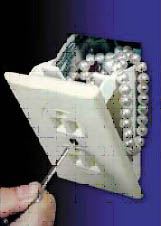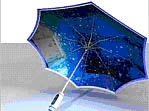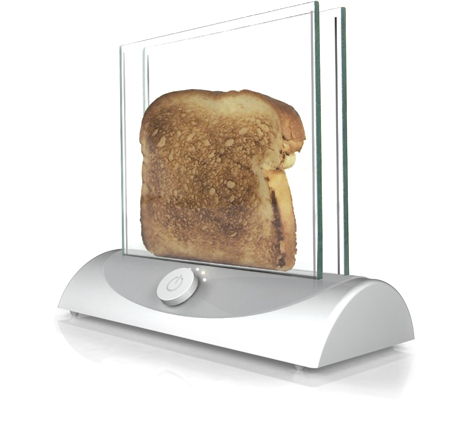Went out for dinner the other night with my wife and some colleagues. Had a great meal at a decently pricey restaurant, and pretty much the moment I hit about $30 or so per head, I expect good service. While it wasn’t bad, it certainly wasn’t good service. But overall, all was well until the bill came. Then we agreed to put it on two of our cards, splitting it 40/60 (you know, one of us paid for 2, the other for 3 – but if this didn’t make sense, nor will the rest of my story). The waitress (if stewardesses are now flight attendants, why aren’t waitresses food or restaurant attendants?) came by, we said 40%-60%, she wandered off.
About 5 minutes later she returned, needing a reminder as she recalled us saying 80-20, but didn’t think that was accurate. We reiterated the split, and she expressed her confusion on it. I made a quick guess at the number, but really wasn’t in a “calculating mood” and honestly wanted the service – at this point it was clearly an issue of principle (its the principalities of it!). Several minutes later she returned with the bill split exactly at my guess number (wrong by about 5%). Ugh.
At this point, both myself and colleague were annoyed. We reiterated the split, and she complained “but you told me something different!” I disagreed and she then said, and I quote, “we don’t have any calculators here, just the computer”.
Are you kidding me?!?
First of all, there’s the audacity to complain that the restaurant can charge $10 for a bottle of still water, but doesn’t have the capacity to do basic math. Second of all, does she mean to say that not only is this type of math beyond her, nobody else at the restaurant could do it? While my colleague did the work on PAPER, I pulled out my mobile phone to show the built-in calculator it included.
The worst part was yet to come, as the restaurant’s new computer system didn’t allow cancellations (yeah, sure), so they had to issue a second check, one with a refund to my card and and additional charge to the others. Pathetic to the nth degree.
As a favor to other diners, I hereby provide JT’s guide to calculating something as blindingly simple as 40% of anything else. For your convenience, I will do it with none of that complication division stuff. I will leave it somewhat condescending, as I feel that’s how it should be described to one who needs this kind of help:
- Take your target percent, for this case we’ll call it 40%, and get rid of the “0”. This gives our example the number 4.
- Multiple the bill by this number. If your bill is, say $150, and your target is 40%, you are doing 150 * 4. Yes, it’s 600.
- Now, remove the last “0” again. In our example, we are at $60
- That’s it!
- Advanced topic: how to figure out the balance for the other card…
- Subtract the 40% number from the total. In this example, it’s $150 – $60, for a total of… uh… hmm… I dunno, something carry the zero?
 It’s mid-May, and I’ve flown roughly 75,000 miles this year, on track to hit 100K by late June. This is a lot by my standards, more than I’ve flown in any other given year (other than once). Virtually every trip I seek out a few little tricks to make my travel a little easier. I found my favorite neckrest at SFO in the “oh crap I forgot to buy someone a gift so I’ll pick up a cool San Francisco t-shirt” store (located near the useful
It’s mid-May, and I’ve flown roughly 75,000 miles this year, on track to hit 100K by late June. This is a lot by my standards, more than I’ve flown in any other given year (other than once). Virtually every trip I seek out a few little tricks to make my travel a little easier. I found my favorite neckrest at SFO in the “oh crap I forgot to buy someone a gift so I’ll pick up a cool San Francisco t-shirt” store (located near the useful  SeatGuru has seat maps for most of the airplanes (and each of their various configurations), chock full of advice on a seat-by-seat basis. A sample “map” is on the right. In a nutshell, green means good, yellow means beware, and red means don’t sit under any circumstances. Their seat maps also include lavatories, galleys, AC power ports, and even the windows. The best part is the seat-by-seat guide, which has some very practical information. Here’s an example:
SeatGuru has seat maps for most of the airplanes (and each of their various configurations), chock full of advice on a seat-by-seat basis. A sample “map” is on the right. In a nutshell, green means good, yellow means beware, and red means don’t sit under any circumstances. Their seat maps also include lavatories, galleys, AC power ports, and even the windows. The best part is the seat-by-seat guide, which has some very practical information. Here’s an example:



 What do people like the most? They like choices!
What do people like the most? They like choices! To fulfill his idea the designer used electronic paper. He also installed a computer chip into the umbrella stem. In fact, we are not much interested into its detailed working mechanism. The thing we understood is that it’s connected with electricity and often gets wet. We hope that it’s absolutely safe and nobody will be harmed when using it in rainy day. Walking with this item you’ll for sure attract everybody’s attention.
To fulfill his idea the designer used electronic paper. He also installed a computer chip into the umbrella stem. In fact, we are not much interested into its detailed working mechanism. The thing we understood is that it’s connected with electricity and often gets wet. We hope that it’s absolutely safe and nobody will be harmed when using it in rainy day. Walking with this item you’ll for sure attract everybody’s attention.
 Let’s face it. The transition to HDTV has been a painful and confusing one. It’s bad enough that there are now 10 different types of TV technologies available in the market, but what’s worse is that display makers, content providers, set-top box manufacturers, and the entire PC industry has been pushing several completely different ways of connecting high definition components since the launch of the first HDTV products in 1998. What’s the end result? There are now millions of high definition products in the market, and they all have different plugs on the back. Component video, FireWire, DVI, and HDMI have all graced the back of a TV set at some point over the last eight years, and now consumers are thoroughly confused.
Let’s face it. The transition to HDTV has been a painful and confusing one. It’s bad enough that there are now 10 different types of TV technologies available in the market, but what’s worse is that display makers, content providers, set-top box manufacturers, and the entire PC industry has been pushing several completely different ways of connecting high definition components since the launch of the first HDTV products in 1998. What’s the end result? There are now millions of high definition products in the market, and they all have different plugs on the back. Component video, FireWire, DVI, and HDMI have all graced the back of a TV set at some point over the last eight years, and now consumers are thoroughly confused. Ok, that’s about the worst title for a post, but I’m jetlagged in Amsterdam and it made me chuckle. Anyhow, Rapleaf is a new Web 2.0 startup (a topic I’m trying to avoid these days, but couldn’t help it here) from the SF Bay Area focused on, and this part I like very much, trying to make the world a better place. Amen!
Ok, that’s about the worst title for a post, but I’m jetlagged in Amsterdam and it made me chuckle. Anyhow, Rapleaf is a new Web 2.0 startup (a topic I’m trying to avoid these days, but couldn’t help it here) from the SF Bay Area focused on, and this part I like very much, trying to make the world a better place. Amen!





 As
As  ly content, they must use a secure technology, which IS provided through digital cable connections such as HDMI and DVI. Most important for you: if you HAVE the option to switch from component to either HDMI or DVI cabling,
ly content, they must use a secure technology, which IS provided through digital cable connections such as HDMI and DVI. Most important for you: if you HAVE the option to switch from component to either HDMI or DVI cabling,  One of the most comforting moments I can enjoy is to make myself a slice of toast for breakfast or for a midday snack. As for me, toast is one of those perfect foods that will hardly ever go out of style and fashion.
One of the most comforting moments I can enjoy is to make myself a slice of toast for breakfast or for a midday snack. As for me, toast is one of those perfect foods that will hardly ever go out of style and fashion.